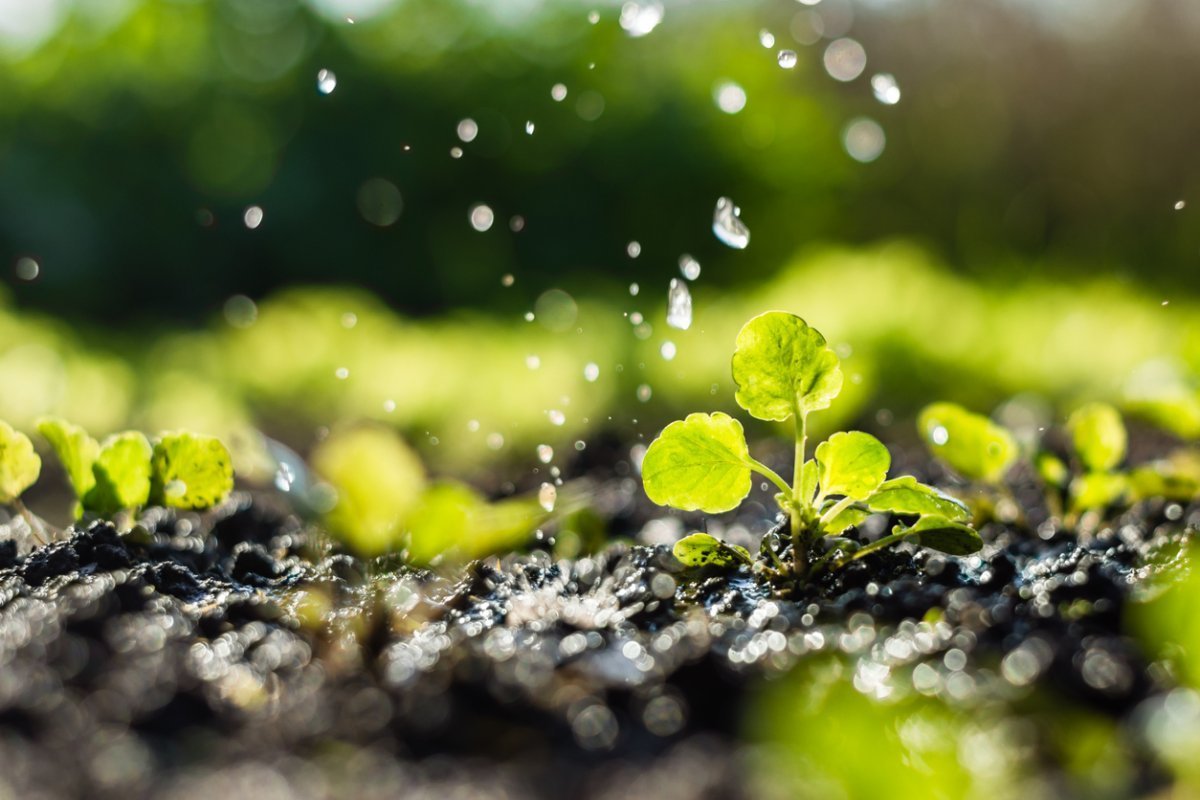There’s nothing like walking to your garden and getting your shoe stuck in the mud. That goopy sound it makes (is goopy a sound?) tells you that there’s way too much water in the soil. Your plants don’t like it anymore than you do, either. If this sounds like a regular occurrence, it might be time to think about improving garden drainage.
Don’t worry, though. This might not be as daunting a project as it seems. Yes, you could install drainage pipes under your yard. And yes, it is possible that your garden drainage issue may be more of a problem than we can tackle here. It’s also true that you might be able to find a simple solution. And why spend big bucks and commit to a major project if the secret to improving garden drainage is right in front of you?
Discover 7 top tips for growing, harvesting, and enjoying tomatoes from your home garden—when you access the FREE guide The Best Way to Grow Tomatoes, right now!
Improving garden drainage: 7 solutions that don’t cost a fortune
When it comes to a vegetable garden, whether it’s a raised bed, in the ground, or a container garden, “well-drained soil” is one of the most regular statements you’ll hear. Your plants do need water, but they aren’t fish. They don’t want to swim in a pool of rainwater. You could hire a landscape architect to come in and help you. They would probably make your entire yard look gorgeous. But there are a lot of steps you can take for improving garden drainage that don’t take that kind of big work. Here are some things I’ve found that have worked well.
1. Determine where the water is coming from. One of my city-dwelling friends has a small garden next to his house because that’s the only spot in a small yard that gets any sunlight. Unfortunately, the garden would get pretty sloshy whenever it rained because there was a hole in the gutter right above the garden. That was an easy problem to take care of.
2. Determine where the water is coming from: The sequel. One strategy for improving garden drainage is to improve drainage around your garden. Is there something that’s preventing drainage from your garden? Or something that’s directing rainwater to your garden? This could be anything from a wood pile to a wall to the slope of the land. If this is the case, figure out what you can do to change the direction of the water.
3. Plant more! If there is an issue with water draining into your garden, consider planting some ground cover or shrubs.
4. Add compost. If you’re working on improving garden drainage before you’ve started your garden, use a garden fork to mix compost into the soil. Not only will it add nutrients, but it also makes the soil looser, giving excess water a place to go.
5. Poke holes in it. The soil that is. Grab your garden fork and, being careful to avoid plants and roots, poke holes in the soil throughout your garden. This gives the water somewhere to go and also helps aerate the soil.
6. Use mulch. Mulch such as wood chips or straw can do wonders for a garden. It cuts way down on the weeds and it can soak up water so your garden doesn’t get soggy.
7. Dig a ditch. If you have a more serious problem with a waterlogged garden, you may need to step up your efforts and start digging. A small ditch that runs from your garden to wherever you want the water to drain doesn’t necessarily need to be a major project. The key is that the ditch needs to slope down, so your ditch will be deeper the further away from the garden you get. You can keep it simple and line the ditch with gravel, or add in a flexible pipe and cover it. It’s entirely up to you.
If all else fails, you can trade in the garden and turn it into a cranberry bog. Although, that’s probably just the New Englander in me talking. In any case, try these simple solutions. You might find that they do the trick just fine.
Have you had issues with your garden not draining very well? What steps did you take for improving garden drainage? I’d love to read your ideas in the comments.
Discover 7 top tips for growing, harvesting, and enjoying tomatoes from your home garden—when you access the FREE guide The Best Way to Grow Tomatoes, right now!
